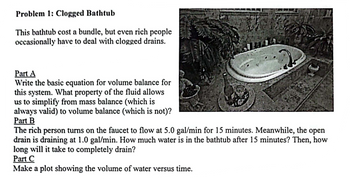Nobody likes blocked drains. Not only can they ruin that relaxing shower you’ve been looking forward to, but they can also gradually damage the plumbing in your home and even cause water damage if left unresolved. Fortunately, it’s relatively easy to prevent blocked drains – and should you encounter them, there are steps you can take to get yourself out of trouble. click here to read on and find out more!

Make Prevention a Priority
Prevention is always better than cure – the same can be said for blocked drains. In fact, the best solution to blocked drains is to stop them happening at all – which you can do by taking a few simple steps.
Firstly, never pour grease, fat or oils down the drain. These substances can stick to pipes and solidify as they cool, forming a blockage inside the pipe walls. Instead, use a cloth or paper towel to wipe these away and dispose of them in the bin. Similarly, avoid flushing non-flushable items such as baby wipes, hygiene products, tissues, sanitary towels or cotton wool balls down the toilet – as these can lodge in the U-bend and cause blockages.
Finally, make sure your drains are regularly unblocked and cleared of any build-up of dirt or debris. It’s recommended that you get your drains cleaned professionally at least once every couple of years – this ensures any hidden blockages are taken care of, so you can rest assured knowing that your drains are problem-free.
Using an Auger or Plunger
If prevention fails, and your drains have become blocked, it is possible to try unclogging them yourself first before calling in the professionals. A handy tool for tackling minor blockages is an auger, otherwise known as a drain snake. This is a long metal tube with a corkscrew-like design at one end that fits down the plughole and breaks up blockages from within the pipe. You can pick up an auger from most DIY stores.
Alternatively, a plunger is useful for clearing blockages caused by air-locking, such as those caused by slow-draining sinks. Again, you can pick up a plunger from most hardware stores. Once you have your tools, follow these steps:
- Wear protective gloves
- Half fill the sink or bath with water to create suction
- Put the plunger over the drain and press downwards firmly several times
- Keep pressing until the blockage has gone
- Run hot water through the drain for 30 seconds
If you find that your blockage persists, it may mean that it is further down in the pipework system where an auger or plunger cannot reach – if this is the case, it may be time to call a professional plumber.
Calling In The Professionals
Using a qualified plumber not only means you’ll get a guarantee on the work, but also gives you peace of mind that the job has been done correctly. A reputable plumber will be able to solve your drainage issue quickly and without fuss. They will typically start by carrying out a CCTV survey of the pipework, to determine the cause and location of the blockage. This involves inserting a camera into the drain which then transmits images back to the engineer – allowing them to pinpoint exactly what the problem is.
Once they’ve identified the blockage, the plumber will use specialist equipment to break it up and remove it from the pipes. This could involve the use of a hydro jetting nozzle, an electric eel or manual rodding. They may also need to carry out further repairs if damage such as corrosion has occurred inside the pipework. It’s important to note that unless the cause of the blockage is identified and rectified, it’s likely that the blockage-causing problem will reoccur in the future.
Conclusion
Blocked drains can be an annoying inconvenience to deal with. But don’t worry – with a little bit of know-how, you can prevent blocked drains from occurring in the first place. If the worst should happen, there are many DIY solutions you can try before calling a professional. Ultimately, however, getting the help of a trained plumber is always your best bet for solving any drainage issues.

